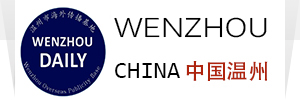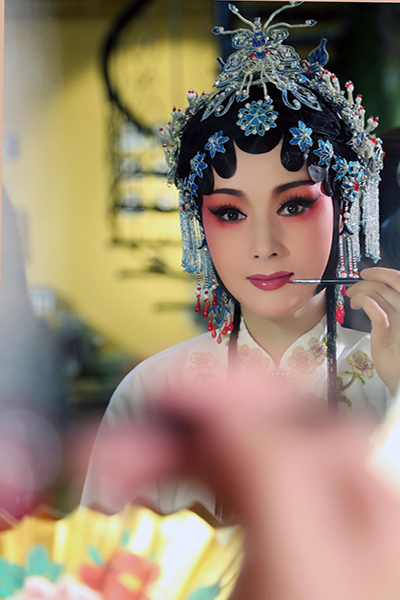



Zhejiang province outshines in terms of intangible cultural heritages(ICH). The region embraces 217 listed items in the four ICH listing projects, riding at the top of the whole country. What's more, there are still 10 recognized Intangible Cultural Heritage of Humanity, four out of which belong to Wenzhou!
How many of these four cultural heritages have you acquainted yourself with? Have you ever heard about their histories or perceived them with your own eyes? Today is your opportunity to broaden your horizon.
Yongjia Kunqu Opera

Yongjia Kunqu Opera, after making its journey into Wenzhou (historically called "Yongjia") from its original birth place (Kunshan area in Jiangsu Province), has under the influences from local dialects, customs, and other native operas and finally assumed its distinctiveness of peculiar antiquity, subtlety and colloquialism from the localization process. Later, it even spread from Wenzhou to its surrounding areas like Lishui and Taizhou. Experts render Yongjia Kunqu Opera to be especially high historical and academic value for the "Haiyan vocal intonation" and early "Wenzhou vocal intonation" preserved in it. In recent years, Yongjia Kunqu Opera obtained Caoyu Opera Award, Wenhua Award, Luxun Literature Award from Chinese Opera Society. It was registered into the first National Intangible Cultural Heritage list in 2006, and the Intangible Cultural Heritage of Humanity catalogue in May, 2001.
Braided-Girder wooden arch bridge architecture

A wooden arch bridge with braided girder is vernacularly called "centipede bridge", and contemporarily named "veranda bridge". The oldest such bridge in existence is Sixi Bridge whose construction began as early as 1570 AD, Ming Dynasty (Longqing the fourth year), with its arch structure similar to the rainbow bridge depicted in the well-known traditional Chinese painting masterpiece -- Qing Ming Shang He Tu, it was built with ingenious mechanics so that not a single nail was present in the structure. Unfortunately, there were only two men -- Dong Zhiji and his apprentice -- standing as extant artisans grasping this architecture which urgently needs intensive rescue and protection. It was included into the sixth batch of National Cultural Relic Protection Sites in 2004, listed in the second Zhejiang Provincial Intangible Cultural Heritage in 2007 and the national list in 2009, and UNESCO list of ICHs in need of urgent safeguarding in the same year.
Wooden type printing

The two wooden type printing workshops of more than 800 years' history found in Ruian City, one in Pingyang Town Dongyuan village and the other in Caocun Town Xiqian village, were the only two living examples of the technique in use, mainly for the printing of local family genealogy. The Genealogy of Family Wang in Taiyuan County recorded the long trip the family members took from their hometown in Henan Province, and during 1506 to 1521(Zhengde period in Ming Dynasty) from Fujian Province into Zhejiang with people's migration group, then finally settled in Ruian through Pingyang in 1736, the first year of Emperor Qianlong's rule in Qing Dynasty. To craft wooden type, best-quality Callery pear timbers are selected as raw materials, then they are weathered and dried up in natural environment in preparation, lastly Chinese characters of Song typeface were engraved onto the wooden tiles to form types which are then used throughout a series of procedures like type selecting and composing to finish the printing. The technique was enrolled in the UNESCO list of Intangible Cultural Heritages in need of urgent safeguarding in 2010.
Yueqing fine-line paper-cutting

The art was rife in Yueqing region already in Yuan Dynasty according to written documentation made thence, over 700 years from present, originally widely applied as ornaments for lamps on dragon-boats. It later prevailed among women who embroidered on headgears, footwears and bellybands based on the paper-cuts as frames. The hair-thin fine lines in the paper-cutting are merely 1 mm in width, total 22 lines can be cut to a 1 cm wide paper with less than 0.5 mm intervals. The recent period dating from the founding of PRC has witnessed unconventional contents being added to the traditional patterns, complementing a pattern set encompassing floras, birds and human figures. Certain presentational artworks, flowers and birds, the harmonious bond between soldiers and citizens, after class, weaving girl, etc. were exhibited both nationwide and abroad. The artwork of Zhang Houguang even won the first prize in the National Paper-cutting Competition in 1987. In 2007, Yueqing fine-line paper-cutting was listed in the first enrollment of National Intangible Cultural Heritage, and the list of representational works for World Intangible Cultural Heritage of Humanity in 2009.
Translated by Ni Zang


